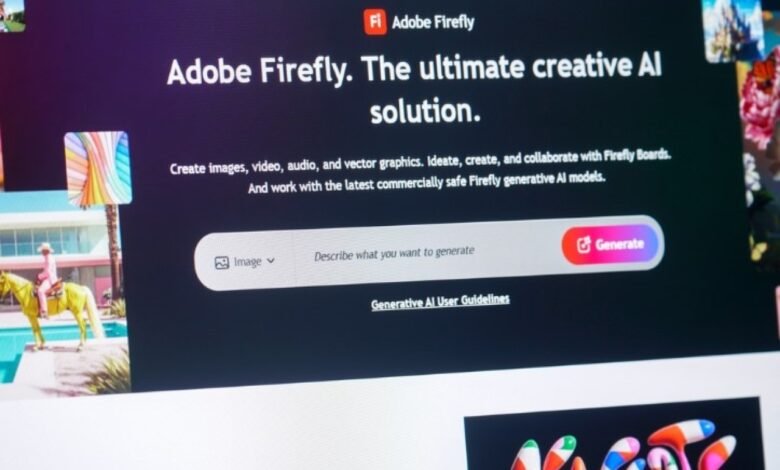Adobe Firefly: Your Complete Guide to Adobe’s AI Design Tool

▼ Summary
– Adobe has developed AI features across its Creative Cloud apps through Adobe Sensei, its collection of large language models and AI algorithms.
– Adobe Firefly is a generative AI tool family that creates images, text effects, video, and audio, accessible via dedicated apps or within Adobe software like Photoshop.
– Key Firefly features include text-to-image/video/audio generation, sketch-to-image conversion, vector graphic creation, and generative fill for editing media.
– Adobe prioritizes ethical AI by training its models on curated data from public domain and Adobe Stock to avoid bias, hallucinations, and copyright issues.
– Firefly supports multimedia prompting, allowing users to input text, images, video, or audio, positioning it as a versatile creative workstation rather than a chatbot.
While many tech giants have been loudly showcasing their artificial intelligence projects, Adobe has pursued a more deliberate path, steadily integrating AI capabilities into its Creative Cloud ecosystem. Tools like Photoshop, Acrobat, and Premiere Pro have quietly incorporated intelligent features such as automated touch-ups, document summarization, and smart fill functions. These incremental enhancements laid the groundwork for Adobe Sensei, the company’s comprehensive collection of large language models and AI algorithms that power various functions across Adobe’s product line.
The natural evolution of this technology led to Adobe Firefly, the company’s dedicated generative AI platform. This suite represents Adobe’s full-fledged entry into the generative AI space, offering creators a powerful set of tools designed to integrate seamlessly with existing workflows.
Adobe Firefly functions as a multifaceted creative assistant, capable of generating images, video content, audio, and vector graphics from simple text descriptions. Beyond text-to-image generation, it enables users to transform hand-drawn sketches into polished digital artwork, create dynamic text effects, and even convert static images into moving video sequences. The platform operates both as a standalone application and as an integrated component within popular Adobe software including Photoshop, Illustrator, and Premiere Pro.
The capabilities of Firefly extend far beyond basic image generation. Creative professionals can leverage its sketch-to-image conversion to rapidly prototype logo concepts or develop custom icons for web projects. The generative fill feature allows users to intelligently add, remove, or expand elements within existing images using simple text commands. This functionality, sometimes called ‘magic autofill,’ is available through Photoshop online and Adobe Express at no cost.
What truly distinguishes Adobe Firefly is its sophisticated approach to prompt engineering. The platform accepts not only text-based prompts but also uploaded images, audio files, and video content as input sources. This multimedia prompting capability transforms the creative process, allowing designers to refine existing assets with unprecedented precision. Rather than functioning as a simple chatbot interface, Firefly operates more like a comprehensive creative workstation with an expanding toolkit of AI-powered features.
From an ethical standpoint, Adobe has taken a notably responsible approach to AI development. Unlike systems trained on uncurated web data, Firefly’s underlying models were educated exclusively on Adobe Stock content and public domain materials. This careful curation helps mitigate common AI risks including bias propagation and factual inaccuracies. The company’s commitment to ethical AI extends to its leadership in the Content Authenticity Initiative, a global coalition working to establish transparency standards for AI-generated content.
Creators using Firefly benefit from clear ownership rights, with all generated content belonging exclusively to the user. Adobe maintains that it does not utilize user creations to train its algorithms, providing additional peace of mind regarding intellectual property protection.
The development philosophy behind Adobe’s AI initiatives emphasizes gradual, methodical improvement rather than rapid public releases. This measured approach reflects the company’s understanding that generative AI technology remains in its formative stages, requiring careful refinement of training methodologies and output quality controls.
Those interested in exploring Firefly’s capabilities can access the platform directly through their web browser or download dedicated mobile applications. Whether generating AI voiceovers, converting sketches into digital art, or experimenting with advanced prompt engineering, Adobe Firefly offers a comprehensive suite of tools for modern creators seeking to enhance their workflow with artificial intelligence.
(Source: ITWire Australia)



